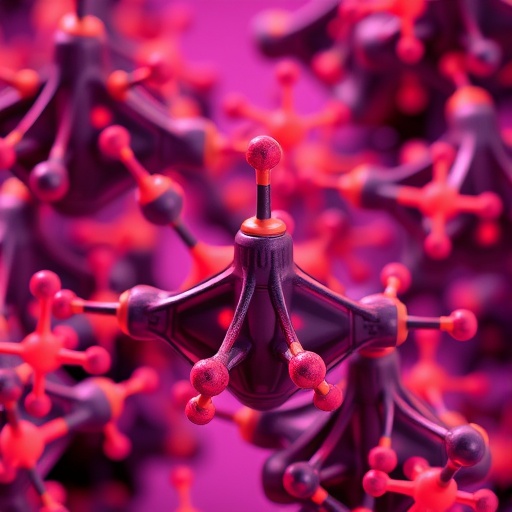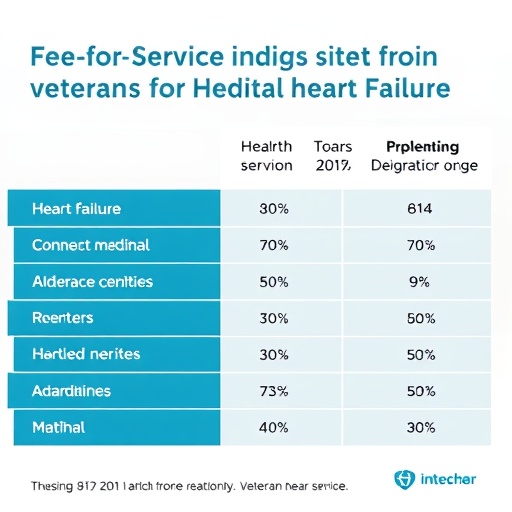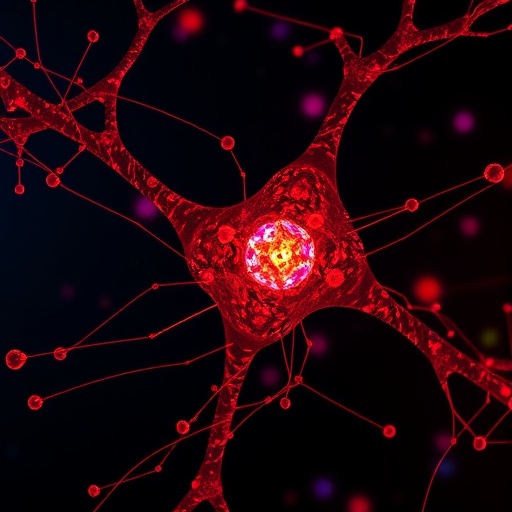In a groundbreaking advancement poised to redefine the landscape of chemical research, scientists have unveiled a novel methodology for mapping the vast and intricate hyperspaces of chemical reactions using state-of-the-art robotics. This pioneering work, made possible by modern reaction automation, represents a monumental leap toward decoding the fundamental structural complexity underpinning chemical processes. It promises not only to accelerate discovery but also to catalyze new dimensions in reaction optimization by harnessing the power of multidimensional analysis.
Chemical reactions have long been understood through simplified parameters, often examining isolated variables without considering the richer, interconnected multidimensional spaces where these transformations actually occur. This new approach breaks away from traditional paradigms by conceptualizing reactions as networks embedded within vast hyperspaces defined by reaction conditions such as temperature, concentration, solvent, catalyst, and other critical factors. By employing a robot-assisted platform capable of systematic exploration, researchers have begun to chart these hyperspaces with unprecedented detail and precision.
The significance of visualizing and analyzing reaction hyperspaces transcends mere academic curiosity. These hyperspaces serve as one of the five foundational spaces in the domain of mathematical chemistry, providing a rigorous framework to understand the dynamic relationships and pathways available to chemical systems. The ability to map these multidimensional conditions systematically enables a deeper insight into reaction mechanisms, revealing switches between major products and offering parallels to complex biochemical networks. This analogy underscores how the complexity of synthetic chemical systems can mirror that of biological processes, opening promising avenues for diversity-oriented synthesis.
Central to this advancement is the development of hyperspace visualization tools, made openly accessible through platforms like Zenodo, which empower chemists to dissect the structure of these reaction networks dynamically. Alongside, high-throughput robotic experimentation has been instrumental in generating comprehensive yield maps that serve as rich datasets for both empirical understanding and computational modeling. These datasets fill a crucial void in benchmark materials for evaluating yield optimization algorithms, which have hitherto faced limitations due to scarce and narrowly defined data.
The implications for practical chemistry are profound. This methodological innovation can radically transform the pace at which new synthetic routes are discovered and optimized, making the process more systematic and less reliant on trial and error. By integrating automation, data-driven insights, and advanced visualization, it is becoming possible to navigate and exploit reaction spaces much more efficiently. This holds particular promise for pharmaceutical synthesis, materials science, and catalysis, where reaction conditions often dictate success or failure in complex and unpredictable ways.
Beyond immediate applicability, the work presents an emerging perspective of chemical reactions as dynamic and adaptable networks. Unlike classical isolated reaction models, the network view considers feedback loops, switching behavior, and the potential for oscillations within reaction systems, akin to biochemical oscillators. This systems-level insight offers a fertile ground for exploring non-linear chemical kinetics and may eventually lead to engineered reaction networks with tailored dynamic behaviors highly valuable for synthetic chemistry and industrial processes.
The platform’s current capabilities allow systematic analysis under a broad but defined set of conditions, yet the scope is envisaged to expand dramatically. Future developments are targeting the inclusion of reactions requiring solid dispensing and strict inert atmospheres free from oxygen—conditions that are essential for many sensitive catalytic and organometallic transformations. Such advancements will broaden the hyperspace accessible to robotic mapping and deepen the understanding of reaction networks in these more challenging regimes.
Moreover, there are plans to enhance the speed and precision of dispensing and measurement operations. Achieving faster robotic cycles will be critical for studying rapid reaction kinetics and transient intermediates, enabling real-time monitoring of hyperspace evolution with much finer temporal resolution. This temporal dimension is vital for unraveling mechanisms characterized by feedback loops and oscillatory behavior, where data collected at a single timepoint fails to reveal the complexity inherent to dynamic systems.
Importantly, the approach is not confined to static snapshots but aims to capture the full trajectory of reaction hyperspaces over time. Mapping such evolution will allow researchers to reconstruct complex reaction mechanisms, akin to decoding biochemical signaling pathways. This dynamic mapping capability is anticipated to unlock new insights into reaction control, stability, and pathway bifurcations, with broad implications across synthetic chemistry, chemical biology, and materials science.
This research signifies an important intersection of robotics, data science, chemistry, and mathematical modeling. By leveraging automation as a means to generate high-dimensional yield landscapes, it creates a feedback loop whereby experimental data inform algorithmic optimization, which in turn guides successive rounds of experimentation. This synergy between experimental and computational methods stands as a paradigm shift for chemistry, heralding an era where discovery is both accelerated and mechanistically enlightened.
As this robot-assisted hyperspace mapping approach continues to mature, the chemical community can anticipate a surge in the ability to explore reaction conditions comprehensively. The impact on industrial process development could be particularly transformative, reducing development timelines, lowering costs, and increasing reaction robustness. The adaptability of this strategy places it on the cutting edge of synthetic innovation, integrating seamlessly with the emerging trends in automated laboratories and AI-guided research.
Ultimately, this work exemplifies how embracing the complexity of chemical reactions through mathematical abstraction and technological innovation can pave new pathways for science. The collaborative efforts behind this study demonstrate a remarkable fusion of expertise, providing tools and datasets for the broader scientific community to build upon. It foreshadows a future where reaction discovery moves from an art informed by intuition to a science mastered through comprehensive data and automation.
In conclusion, the robot-assisted mapping of chemical reaction hyperspaces and networks heralds a paradigm shift for both fundamental and applied chemistry. By comprehensively delineating the multidimensional landscapes of chemical transformations, it opens fresh possibilities for controlling, optimizing, and designing reactions with a precision and depth previously unattainable. As these techniques evolve, they will undoubtedly become indispensable in tackling the growing complexity of chemical synthesis in the twenty-first century.
Subject of Research: Robot-assisted exploration and mapping of chemical reaction hyperspaces and networks, focusing on the multidimensional analysis of reaction conditions and their impact on product formation and reaction dynamics.
Article Title: Robot-assisted mapping of chemical reaction hyperspaces and networks
Article References:
Jia, Y., Frydrych, R., Sobolev, Y.I. et al. Robot-assisted mapping of chemical reaction hyperspaces and networks. Nature 645, 922–931 (2025). https://doi.org/10.1038/s41586-025-09490-1
DOI: https://doi.org/10.1038/s41586-025-09490-1
Tags: accelerating chemical discoveryadvanced chemical research methodologiesfundamental structural complexity in chemistryhyperspace chemical reactionsinnovative approaches to chemical processesmathematical chemistry frameworksmultidimensional reaction analysisreaction network optimizationrobot-driven chemical mappingrobotic reaction automationsystematic exploration of chemical hyperspacesvisualizing chemical reaction pathways





